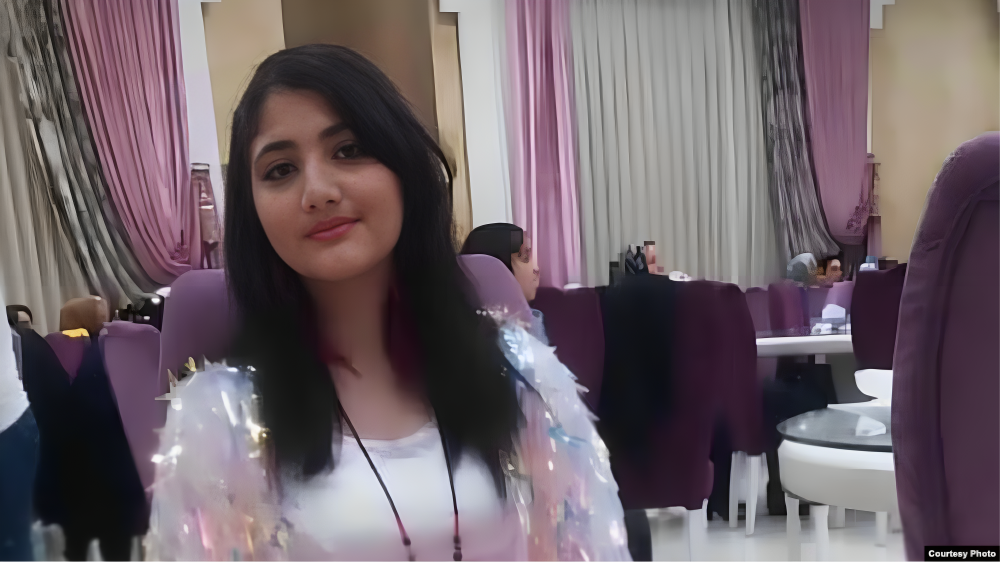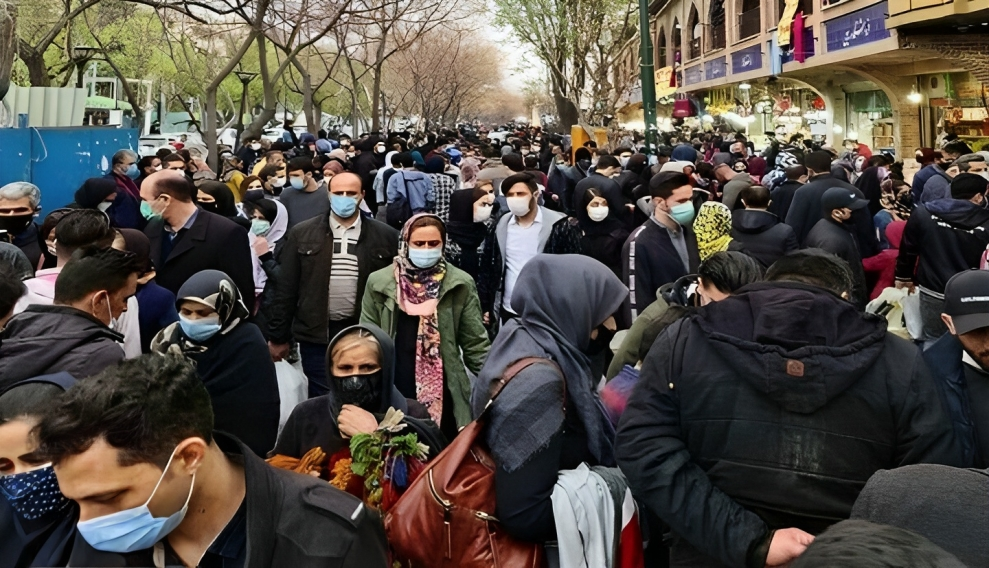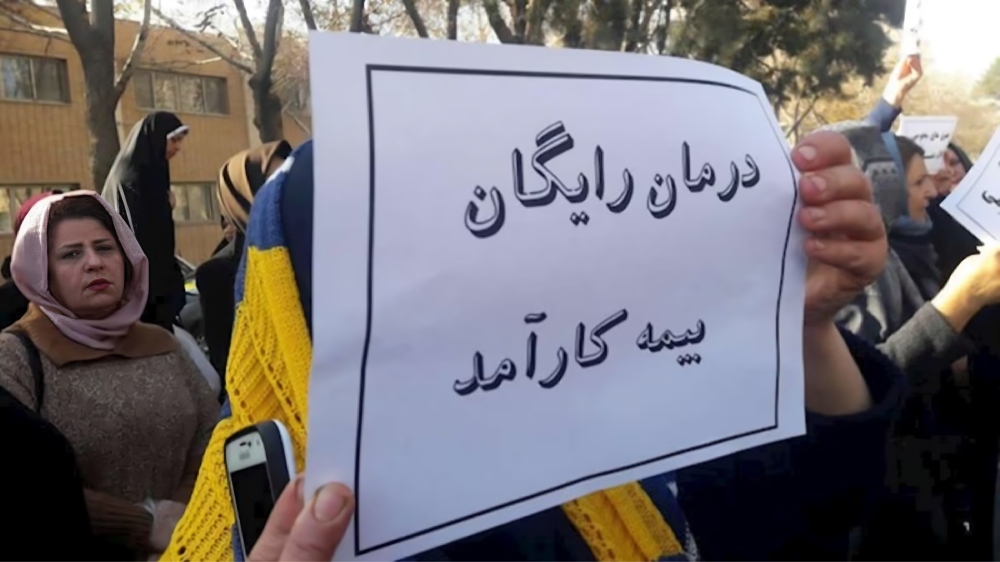
Messages Regarding Field Developments Between Iran and the United States
The editorial of Arman Emrooz explains that Iran and the United States are exchanging messages regarding the Israel- Hamas war.
With respect to the recent events in the region, it seems that there are different confidential backchannels for sending messages, but the truth is that it all comes down to two actors: Tehran and Washington. This theory can be confirmed not just in relation to field developments in Gaza but all over the region.
As for backchannels, we are witnessing the “duel of messages:” on the one hand, Iran probably sent messages to Washington and Tel Aviv in the second week of the conflict, urging that any ground invasion would spread the war to the region. On the other hand, with US Secretary of State Antony Blinken’s trip to Qatar, Washington too sent a message via Doha to Tehran saying that the entrance of any third actor in Gaza’s equation will be faced with a US reaction.
But if diplomatic messages are not backed by moves in the field, they will be premature and ineffective. So both sides have taken measures to back these confidential messages in the field. In this context, it is natural for Iran to show that, along with its non-state allies from the east of the Red Sea to the east of the Mediterranean Sea, it is fully ready for such a war.
So in the first step, Iran started redeploying its forces in Syria, moving them from northern Syria and areas like Aleppo to the south of Damascus. And in the second step, it had to create a preemptive network in the field. These measures are only tactical to show that the message conveyed from Tehran to Washington is logical and can become operative.
In the third step, the second layer of Iran’s regional network had to become active: Hezbollah, Ansarullah and the Badr forces. Activating these forces is not a strategic move, but is only for tactical strikes on Israel, which is why in northern Israel, Hezbollah is constantly carrying out tactical, military operations with two goals: first, to show that Hezbollah is fully ready to enter the war, and second, to show that Hezbollah will not allow Israel to feel safe in the northern areas.
At this stage, the fourth forces should have also entered the field to disrupt the other side’s strategic plans, and that was Ansarullah’s missiles with a 2,000 kilometer range and a 1,000 kilogram warhead, as well as drones with 40 kilogram bombs. These were traced and intercepted by US forces but sent a message: that distance will not prevent these forces from entering the battlefield.
So the danger is not just from Hezbollah toward Israel, but a fourth actor too might enter the war with Israel.
Brain Drain Crisis
The editorial of Jahan Eghtesad urges that measures must be taken to stop the emigration of health care workers from Iran.
When we look around ourselves and talk about incidents and disasters, we might ask ourselves: what can be called a tragedy now?
Today, the brain drain and the emigration of those who are needed by society are irreparable disasters that cannot be resolved soon. It is like cutting off a tree when it is time for its coming to fruition, and now we have to wait for several decades for another one to become fruitful.
Reportedly, health workers, particularly nurses, have been emigrating from the country in recent years. Now, the country’s crisis management center might have plans for dealing with natural disasters, but do they have any plans for addressing the issue of the brain drain, particularly that of health workers? Has a task force been assigned for resolving the problems of these groups in society?
There are different reasons for emigrating from a country. But some reasons are common: lack of basic services, a high rate of unemployment, poor housing, low wages, lack of job security, workplace violence, political instability and war are factors that significantly impact the emigration of health workers. On the other hand, offering proper services, a low unemployment rate, good wages, job security, better work conditions and job satisfaction are the best incentives for encouraging these workforces to stay in the country.
According to the Migration Observatory, until 2018, 4,000 Iranian nurses and 8,000 Iranian physicians and surgeons were working in the United States, and most certainly these numbers have increased now. Furthermore, according to the 2018 US Census, 29,000 Iranian were active in the US health sector.
All the above-mentioned issues regarding emigration demand serious resolve and proper planning to keep these workforces in Iran.
Al-Aqsa Storm and Perpetual Loss of Netanyahu
The editorial of Arman Melli sheds light on the fact that the recent war in Gaza has put Israeli Prime Minister Benjamin Netanyahu in an impasse.
To reclaim their lost credibility, the Israelis are seeking to enter Gaza on the ground in order to justify the defeat of their own people. But the truth of the matter is that they are at a dead end with nowhere to go.
If they attack Gaza on the ground, they will be heavily defeated and their military credibility will be questioned, which means that Netanyahu and his government will have to face questions for reiterating the mistakes of 2008 and 2014 in Gaza. They will receive heavy blows which is why the Americans and Europeans are trying to stop Israel from attacking Gaza.
That is why the ground invasion of Gaza by Israelis is unlikely, but if they do so, their entering Gaza will only complicate the situation and deepen the crisis. For days, the Jewish community, feeling unsafe and scared, is living in shelters. Israel’s economy is grounded and people’s businesses are closed.
The continuation of the current situation will prompt Israelis to move to Jewish settlements. So, the continuation of the war and the ground invasion of Gaza are not easy decisions to make and will have devastating ramifications. And if the Israelis do not enter Gaza and Netanyahu does not wage this war, their credibility remains heavily damaged. If Netanyahu wages this war, he must later face trial as a war criminal in Israel. And if he does not do so, he will be held accountable for this great fiasco.
In other words, Al-Aqsa Storm has put the Israeli government in a dead-end situation more than ever, making it face a crisis that cannot be easily resolved.
Necessity of Entrenching Iran’s Presence in the Mediterranean Sea
The editorial of Mardomsalari reviews the significance of the Mediterranean Sea and urges that Iran must consolidate its permanent presence there.
The Palestine problem has unleashed great violence that is uncommon in international relations. Issues like the rights of existence for both sides, occupation and fighting occupation have confused the international community. Superpowers, transregional and regional powers are facing a regional crisis and irreparable damage. The people of the region are exhausted and economies are suffering. For overcoming this crisis, new strategies must be devised.
If we look carefully at the reasons for the founding of Israel, we can see that one of the reasons was to create a buffer zone between the countries in West Asia and the Mediterranean Sea. Ever since World War II, Syria and Lebanon which overlook the sea have been weak countries with fragile governments and have been consumed by domestic issues.
The Mediterranean Sea is in fact the focal point of Europe’s security and any continent which rules over the Mediterranean Sea will have security and will overlook both Asia and Africa. In the meantime, the presence of West Asia and Africa in the Mediterranean Sea is minimal and this important sea is fully controlled by Europe, NATO and the United States.
The importance of Israel for Europe and the United States is because of the significance of the Mediterranean Sea, and the visits of Joe Biden, Rishi Sunak and Emmanuel Macron to Tel Aviv for supporting Israel are related to the significance of the Mediterranean Sea for the West. Even Gaza’s coastline is guarded by Germany’s naval forces on behalf of Israel. England, France and the United States too have large naval forces in Cyprus and the eastern Mediterranean Sea.
The solution to the recent crisis in Palestine is the permanent deployment of Iran’s naval forces in the Mediterranean Sea. When Western countries realize that Iran is behind Israel’s trenches in the Mediterranean Sea, then Israel’s situation will not be important for Europe and the United States and they might even be ready to negotiate about the Mediterranean Sea and West Asia’s share in this sea.
Previously, Iran had a temporary presence in the Mediterranean Sea, but it is totally different from a permanent presence in that sea. The situation in Syria and Lebanon is fragile, but it is possible to get concessions from them for a naval base.
The other proposal is that by giving concessions to Turkey, Iran can establish a joint base with this country at one of Turkey’s ports.

Another Victim of Obligatory Hijab in Iran: Teenage Girl Dies After Falling Into Coma

Sixteen-year-old Armita Garavand who sank into a coma after an altercation with a “hijab enforcer” at a Tehran subway station a month ago lost her life this week.
The images from Tehran subway CCTV showed Garavand entering the station without the hijab on October 1. A few minutes later she was carried out of one of the cars by her friends while unconscious after sustaining a head injury.
In recent months, Tehran Municipality has deployed some guards, entitled “hijab enforcers,” at subway stations to deal with veilless women. Garavand was confronted by a hijab enforcer inside a car which she entered without a veil.
The Iranian republic has refused to release the images from cameras installed inside the car, claiming she lost her consciousness due to “low blood pressure.” However, human rights organizations compared the way she was killed to that of Mahsa Amini by morality police in September 2022.
Prominent lawyer Nasrin Sotoudeh called what happened to Garavand “a state murder.” Sotoudeh was beaten and arrested after attending Garavand’s funeral ceremony which was held amid heavy security for not wearing the mandatory hijab.
Garavand was buried at Tehran’s Behesht Zahra cemetery where a significant number of people assembled, chanting slogans such as “this fallen flower is a gift to our homeland.” Security forces raided the ceremony and violently took in custody Garavand’s relatives and a number of women.
Another leading rights activist who reacted to this tragedy was the 2023 Nobel Peace laureate Narges Mohammadi, “They sent our Armita who was full of zest for life to death because she didn’t want to hide her beautiful hair under obligatory hijab.”
Mohammadi, who is currently imprisoned for her human rights activities, lambasted the Iranian republic’s suppression of the media in this regard, saying no independent reporter was allowed to enter the hospital where Garavand was; her relatives, friends and teachers were threatened, and the CCTV images were censored.
Following Garavand’s burial, a number of cities in Iran witnessed people chanting anti-establishment slogans from their windows at night, including “Death to the child-killing regime,” and “Khamenei, the Zahhak! We’ll take you down into the grave,” referring to a mythical king who had fed serpents growing out of his shoulders with young people’s brains.
Gender Discrimination: Unemployment Among Women Twice as Much as Men

The latest report of Iran’s Statistical Center shows that the rate of unemployment for women has doubled compared to men.
On average, unemployed female university graduates comprise 68.8% of the entire unemployed population in Iran.
According to the Statistical Center’s data, the number of unemployed university graduates is roughly 42.8%. Based on this data, unemployed male graduates account for 30.5% of those unemployed, while unemployed female graduates constitute 66.3%.
It must be noted that independent experts view with skepticism the official statistics offered by the Iranian government because the Iranian government has often tried to manipulate the statistics.
The announced statistics, however, reveal that the rate of unemployed female graduates is double compared to unemployed male graduates.
Earlier, it was reported that the level of women’s participation in Iran’s economy is less than one fourth of women’s participation in developed economies and half of the level of women’s participation in Turkey.
Iran daily, affiliated with the government, claimed earlier that the level of women’s unemployment had unprecedently decreased. This publication claimed that the growth in women’s employment in the industrial sector has accelerated compared to men.
In his election campaign in 2021, Iranian President Ebrahim Raisi had promised to create 1 million jobs per year. He and his cabinet have repeatedly made claims as to fulfilling this promise. But observers hold that an improvement in employment statistics reflects the fact that a part of the workforce is leaving the work market, not that more jobs are being created.
Lawmaker: Despite the Shortage of 300 Medical Items, the Government Insists “Everything Is Great”

Yahya Ebrahimi, member of the Parliament’s Health Commission, says that notwithstanding the government’s claim that everything is “great” in the health sector, there is a shortage of 300 medical items in Iran.
He underscored that there is a shortage of 300 medical items in pharmacies, but the government will not admit it and keeps saying that everything is “great.”
According to Ebrahimi, because of the shortage of medicines in pharmacies, dealers can sell them in the “free market,” thus creating problems for society.
Disarray in providing drugs for patients comes at a time when, according to the Statistical Center’s report on household incomes and expenses, the share of health and treatment in each household’s expense basket was roughly 9.1%, ranking third after housing and food expenses.
Earlier this year, when some Iranian officials announced the existence of the “drug crisis” in the country, Health Minister Bahram Einollahi claimed “we have eliminated the causes of the shortage of drugs.”
Ebrahimi, however, stated that many pharmaceutical companies do not find it profitable to manufacture drugs as production costs are much higher than market prices.
Under the current circumstances, he added, the production levels of many pharmaceutical companies have dropped, and many young people have lost their jobs because these companies are on the verge of bankruptcy.
Iranian authorities, particularly President Ebrahim Raisi, have promised to overcome the health crisis, especially the shortage of drugs, but these promises remain unfulfilled and the situation has worsened.
The Iranian government and official media have repeatedly blamed the sanctions for the problems in the health sector. Drugs and medical supplies, however, are excluded from the list of sanctions against Iran.
Further Decline in the Rate of Marriage and Fertility

According to the latest report of Iran’s Statistical Center, the rate of marriage in Iran for last spring shows a 9% decrease compared to the same period last year.
In the months of spring this year, according to the report, 130,305 marriages were registered, while this number in the spring of 2022 was 143,697 and 161,742 cases were recorded in 2021.
In the meantime, the divorce rate has decreased, dropping from 46,073 cases of divorce in the spring of 2022 to 38,013 in the same period in 2023.
The other issue stipulated in the report is an increase in the average age of first-time marriage for men and women. In the spring of 2021, the average age of marriage for men was 26.7 years while registering their first-time marriages, in the spring of 2022 it was 27.9 years, and in 2023 it reached 28.1 years.
As for the average age of first-time marriages for women, it was 23.2 years in the spring of 2021, but it reached 23.9 in the spring of 2023.
According to the report by Iran’s Statistical Center, there has been a drop in the fertility rate as well. The number of babies born in the spring of 2023 shows a decrease compared to the same period last year.
The number of births registered in the first four months of this year was 338,601.
The other important issue in the recent report of the Statistical Center is the number of child marriages which has reached the concerning number of 26,989 cases. In the meantime, based on reports from different regions of Iran, children’s rights activists hold that because of not registering marriages under the age of 18, this number is much higher with the issue of child marriage emerging as an urgent social crisis in the country.
Experts maintain that the economic crisis, hopelessness, an uncertain future, the increase in housing and health expenses are factors that have made Iranian youths hesitant about marriage and having children.
